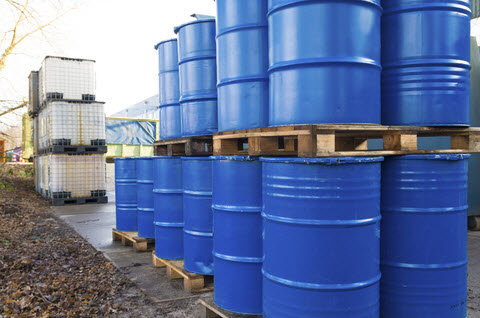Commentary – Canada: Reducing Reliance on Overseas Oil
 Source: www.Dreamstime.com © Hansenn
Source: www.Dreamstime.com © Hansenn
“Why do Quebec and Atlantic Canada buy their oil from Iraq and Saudi Arabia?” asked Brian, an unsettled friend of mine who works in the oil patch. “Alberta should be serving our own national interest,” he said with patriotic conviction.
I listened. I didn’t want to agitate him any further by saying that this country of ours has been having nationalistic debates about energy self-sufficiency since the 1950s. So at the risk of sounding cagey, like someone dealing with a rocky romance, I replied, “It’s complicated.”
That wasn’t a trite answer. The world’s oil systems represent an incredibly complex physiology of pipelines, tankers, rail cars, trucks, distribution hubs and refineries. Every second of every day over 1,100 barrels are pushed through metal arteries. From where and how oil products get to, and pass through, the nozzle at the gas pump is a marvel of logistics. And it’s also a result of cutthroat global competitors constantly muscling in and out of each other’s markets.
Canada is a peculiar country when it comes to oil. Our production far exceeds our needs, but we are not physically self-sufficient. It does seem strange that the fifth largest producer in the world doesn’t serve itself first. But in the 1950s, men in three-piece suits decided against building big, cross-country oil pipelines from Western Canada to the other side of the country.
In hindsight, it seems obvious that the western oilfields of Alberta should have been connected by pipeline to the large consuming eastern provinces. But only one, the Interprovincial Pipe Line, made it as far east as Sarnia in 1954. And even then it went through Wisconsin, out of our national boundary, to get there.
Today, the Interprovincial system has transformed into the Enbridge Mainline, an artery that moves more than half of Western Canada’s crude supply through a vast network of pipelines. Not only does the system transport Canadian barrels, US supply from the Bakken region is picked-up en route too. While the pipe has expanded over the years, most of its deliveries are to US markets. For instance, last year, only about 500 MB/d or 12% of all Western Canadian supply made it to Ontario and points east.
The decision not to build west-east pipelines was economic. Quebec and the Maritimes posited that because of their access to Atlantic tidewater they could access cheaper international oil from places like Africa and the Middle East. At the time, they were right.
But things change. And quick change has a tendency to leave lingering myths. One such falsehood is Brian’s commonly-held perception that Quebec and Atlantic Canada buy the bulk of their oil from the other side of the planet. I told him, “Contrary to popular belief, Canada imports a relatively small amount from Saudi Arabia, or from any other contentious part of the world for that matter. Nor does it get much from the North Sea or North Africa anymore.”
Brian was surprised to learn that most of Canada’s imports now come from the United States. Over the last five years the American oil industry has aggressively taken market share away from Canada’s foreign suppliers. Yes, we used to be served by the Middle East, then the North Sea and a smorgasbord of other far-flung regions. But not anymore.
The changes started in 2010. Back then US oil producers supplied Canadian refineries with 6% of all imports. In five short years to 2015, American barrels have grown to over 60% of the share (see Figure 1). Pipes, rail and seaborne tankers are now transporting about 400,000 barrels a day into Eastern Canada from Texas, North Dakota and other prolific tight oil regions stimulated by hydraulic fracturing.
Eastern refineries, two in Quebec, one in New Brunswick, and another in Newfoundland and Labrador, all like a diet of light oils. So the new source of American crudes is attractive and competitive. Consumption of Alberta oil is growing too. A few years ago, Western Canadian oils (mostly light) started making their way east by rail car – estimates peg the volume near 100,000 B/d last year. Now, Alberta and US oil can move to Quebec through Enbridge’s recently reversed Line 9 pipeline.
Meanwhile down the spine of North America, heavy oil refineries in the US Gulf Coast (the largest market for heavy oil in the world) are taking more and more of Alberta’s viscous oils at the expense of barrels from Venezuela and Mexico.
So Canada is sending more heavy oil to the US, and the US is sending more of the light stuff to Canada. All the displacement is at the expense of foreign imports.
The United States and Canada are becoming increasingly integrated and self-sufficient in oil. That’s geopolitically and economically positive – until such time that all foreign imports have been pushed out of the continent. Then producers in both countries will need to compete for markets on the global stage.
“It’s complicated,” I said again, “like all close relationships.”


